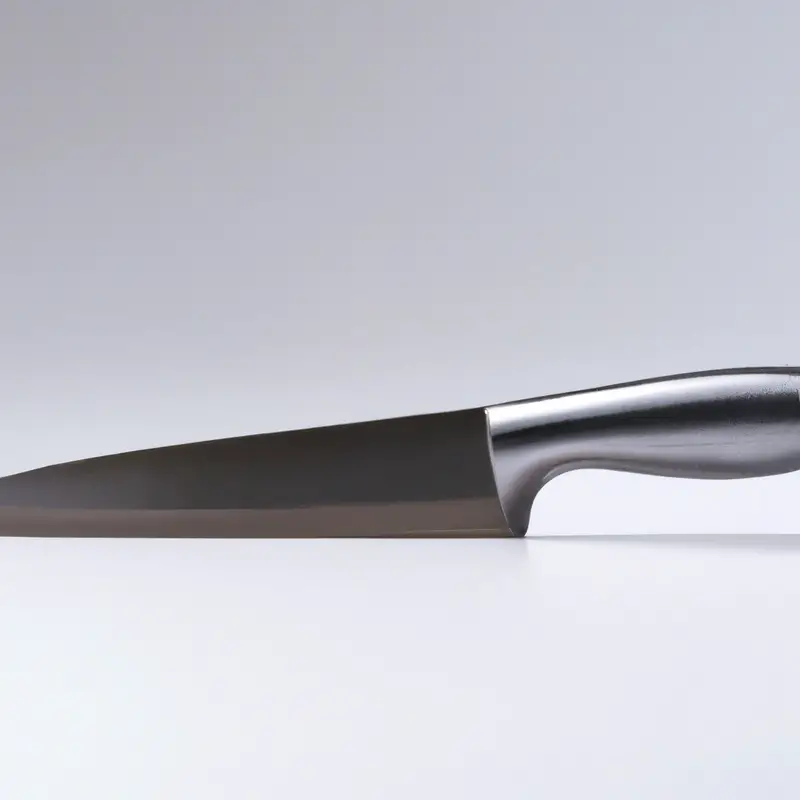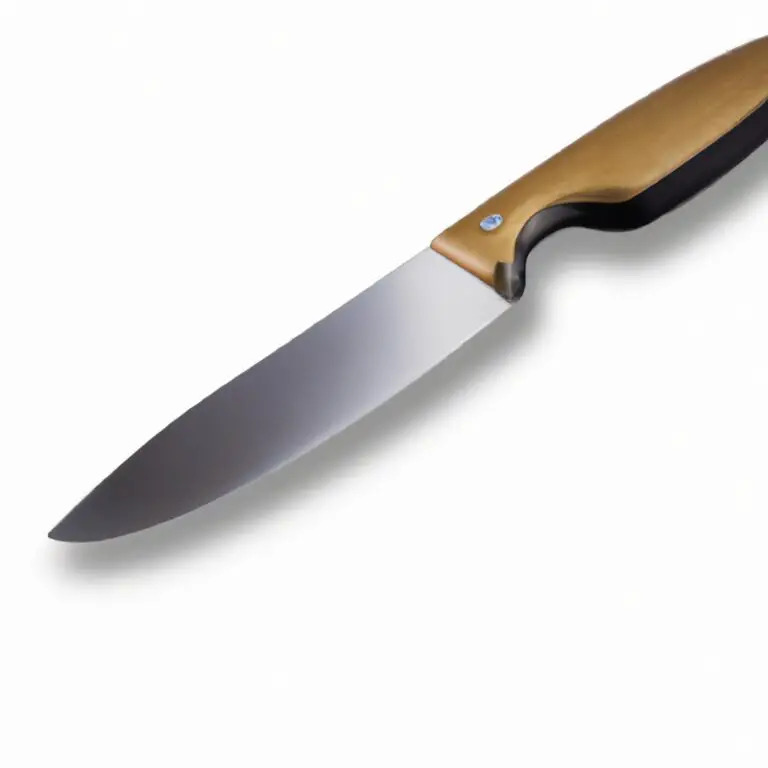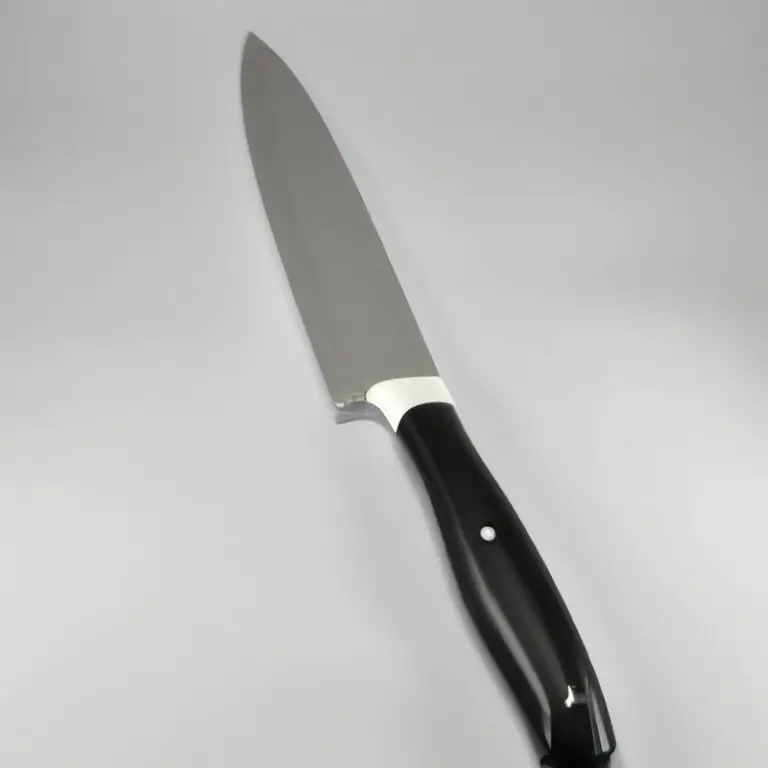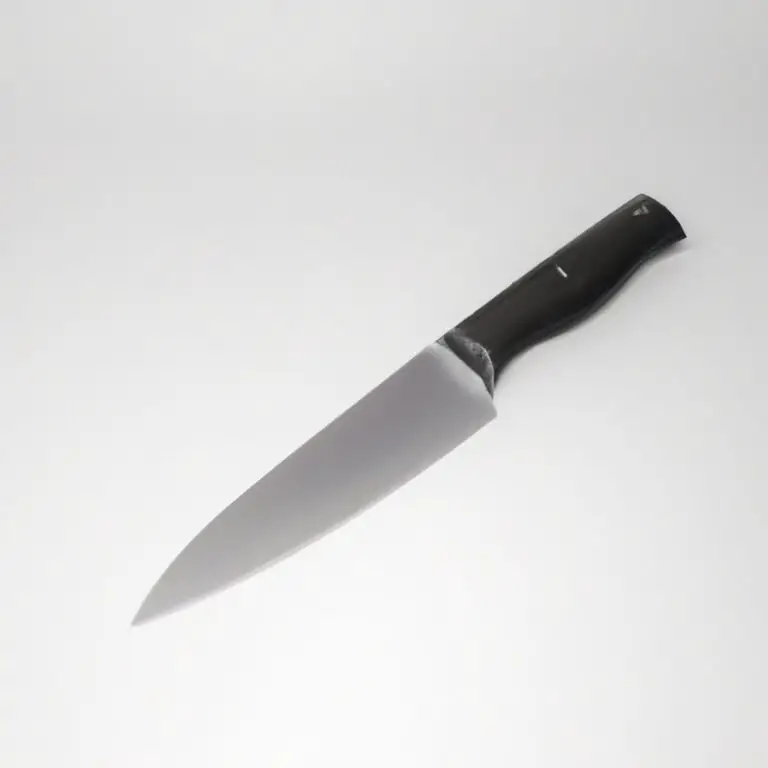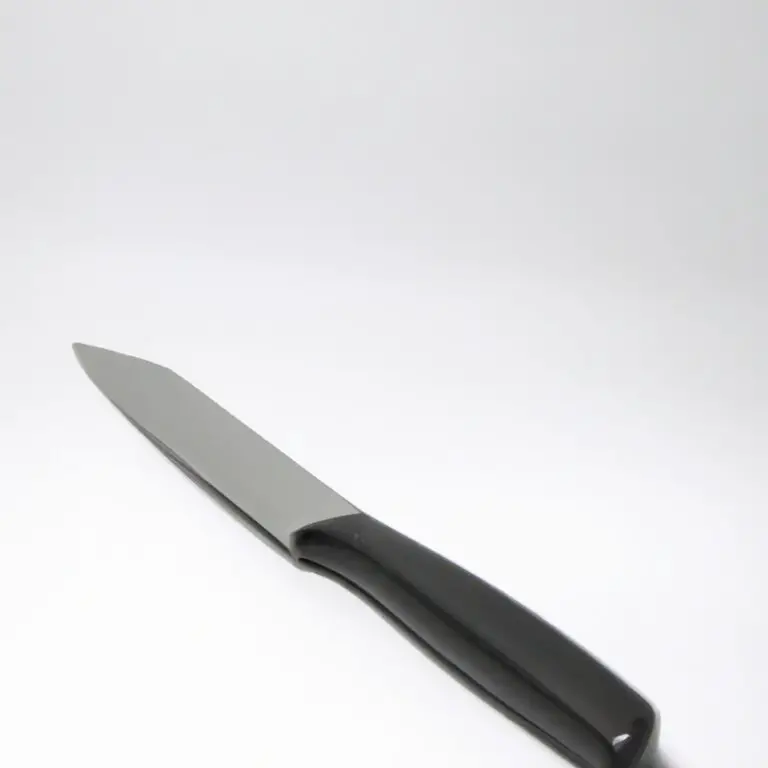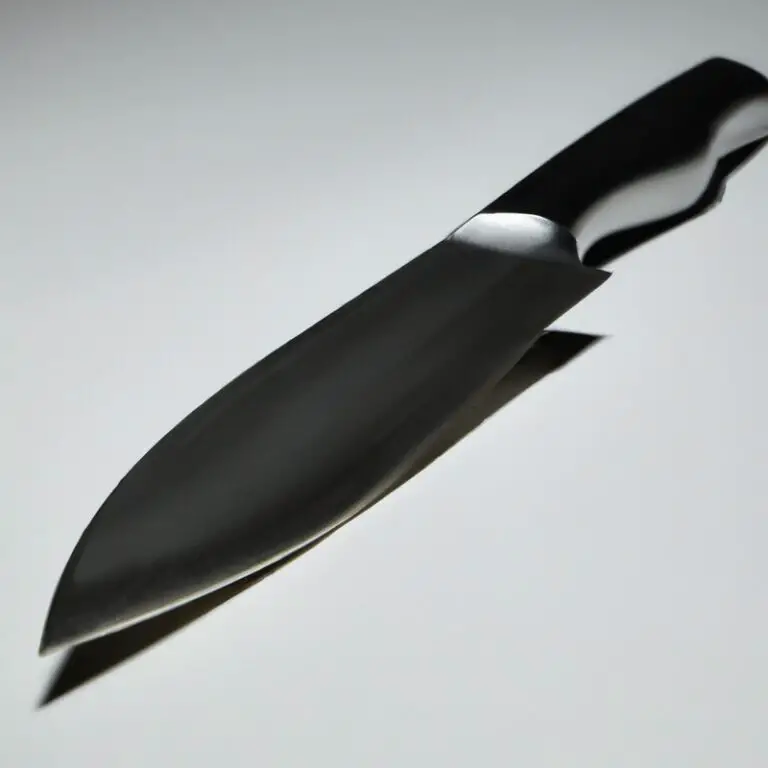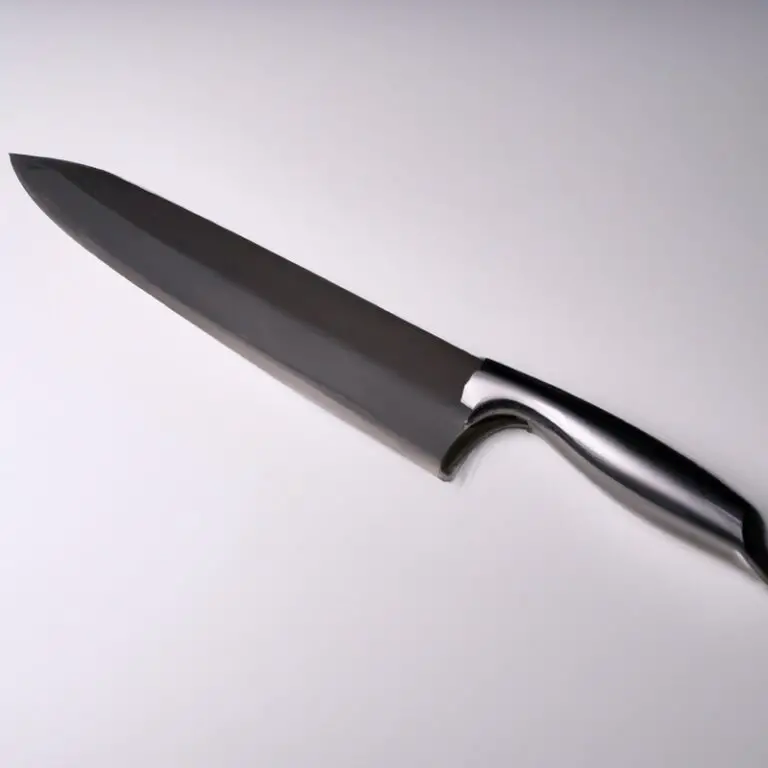How To Prevent a Chef Knife From Rolling Off The Countertop? – Safely!
Key Takeaways:
- Invest in a good quality knife block or magnetic strip to securely store your chef knife.
- Place a damp towel or non-slip mat under the cutting board to prevent it from moving and keep your knife in place.
- Use a knife guard or sheath to protect the blade when not in use and prevent it from rolling off the countertop.
- Always be mindful of your surroundings and keep your knife in a safe place to avoid accidents.
Have you ever experienced a chef knife rolling off the countertop during food prep? It’s not only terrifying but also dangerous.
As a professional chef, I’ve seen my fair share of knife-related injuries.
Therefore, in this article, I will be sharing some effective ways to prevent a chef knife from rolling off the countertop. From using a grip pad to opting for a heavy knife with a bolster or finger guard, you’ll learn some handy tips for safer and more organized knife handling and storage.
So, let’s get started!
| Option | Description |
|---|---|
| Knife Block | A knife block is a countertop storage solution for knives. It comes in various sizes and can hold several knives. The design prevents knives from rolling off the counter. |
| Magnetic Rack | A magnetic rack is installed on the wall and holds the knives in place using a magnet. This keeps the knives secure and easy to access. |
| Knife Dock | A knife dock is a tray made of either plastic or wood which has an angled slot for each knife. It keeps the knife secure while also providing a safe place for it to rest. |
| Mat | A mat is a rubberized or silicone mat that holds the knife in place with friction. It is a simple and affordable solution but not as secure as the other options. |
| Sheath | A sheath is a protective cover that slides over the blade. This keeps the knife secure and safe while not in use. |
Understanding the dangers of a rolling chef knife
A rolling chef knife can be very dangerous as it can easily slip off the countertop and cause injuries. Rolling knives can cause serious cuts, punctures, and other injuries, to both the user and others in the surrounding area.
Additionally, a sharp chef knife can cause more damage than a dull one, leading to a higher risk of injury.
Therefore, it is important to always take precautions when using and storing sharp chef knives and to be conscious of the potential dangers of a rolling knife.
Applying a grip pad to your countertop to prevent slipping
Applying a grip pad to your countertop is an effective way to prevent your chef knife from slipping and rolling off. A grip pad offers a stable and secure surface for your cutting board, providing a firm grip that prevents accidents while allowing you to work efficiently.
Grip pads are made of rubber or silicone material, and they come in various sizes to fit your countertop.
Simply place the grip pad under your cutting board, and it will stick to the surface, keeping your board from sliding around. Furthermore, grip pads have great traction and can be washed easily, making them a durable and long-lasting solution to the problem of slipping and sliding.
Applying a grip pad will not only improve your safety while using a chef knife but also increase your productivity in the kitchen.
Using a magnetic knife strip for safe and accessible storage
Using a magnetic knife strip is an effective and space-saving way to store knives safely and accessibly. By installing a magnetic strip on a kitchen wall, you can keep your knives within reach while reducing the risk of accidents caused by sharp blades lying around on the countertop.
Magnetic knife strips are also easy to clean, and they help to maintain the sharpness of your blades by ensuring that they don’t come into contact with other knives or utensils.
When choosing a magnetic strip, make sure it has a strong magnetic force and is long enough to accommodate the length of your knives. Also, ensure to install the strip securely and at a height that’s safe and convenient for your use.
Overall, using a magnetic knife strip for safe storage is an effective and affordable solution to keep your kitchen organized and accident-free.
Creating a designated knife block for improved organization
Creating a designated knife block is one of the best ways to improve organization and prevent your chef knife from rolling off the countertop. A knife block comes in various designs and materials, from wooden knife blocks with slots to plastic or stainless steel knife blocks with flexible bristles.
Choose a knife block with enough slots to accommodate all your knives, and ensure that the slots are wide enough for your chef knife.
This will prevent your knife from rubbing against other knives, which can dull its blade. Additionally, a designated knife block will keep your knives in one place, making it easy to locate them quickly and safely.
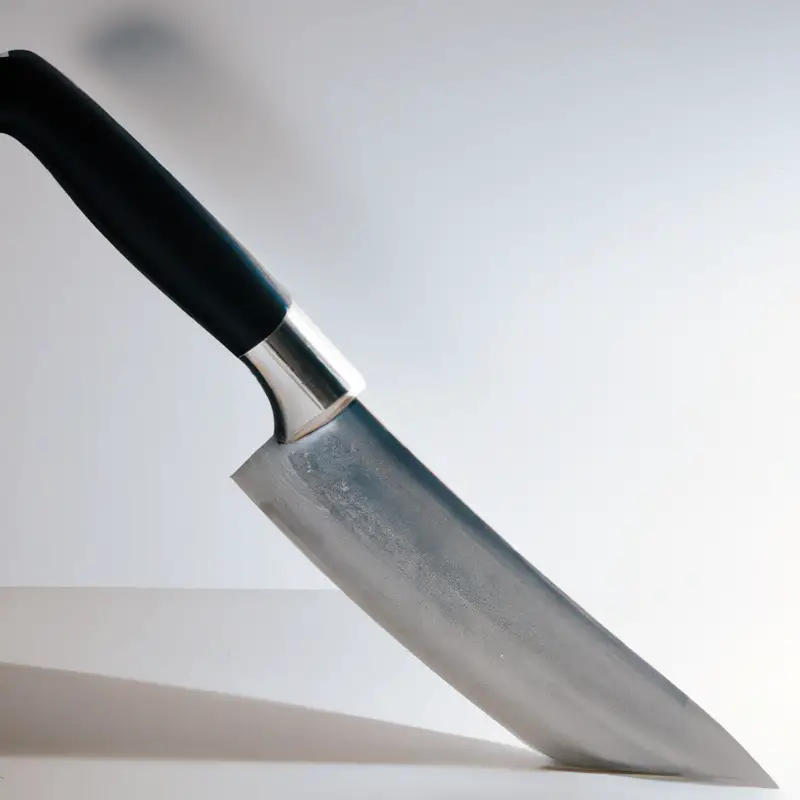
Employing a knife sheath for added protection
Employing a knife sheath is a simple yet effective way to add an extra layer of protection to your chef knife while also preventing it from rolling off the countertop. A sheath can protect the blade from damage and keep it sharp and safe when not in use.
When selecting a knife sheath, consider the material and size to ensure a proper fit for your specific knife.
Leather, plastic, and nylon are common materials used for knife sheaths. Ensure that the sheath is snug around the blade and has a secure fastening mechanism to prevent the knife from slipping out.
Employing a knife sheath is an easy and affordable way to prolong the life of your chef knife and prevent accidents in the kitchen.
Learning proper knife handling and storage techniques
Learning proper knife handling and storage techniques is crucial to prevent accidents in the kitchen. The first rule of thumb is to always keep your knife sharp since a dull blade can slip and cause a mishap.
Additionally, always grip the handle firmly with all five fingers wrapped around it to maintain control.
Storage of knives should be done in a designated block or strip, where the blade is not exposed to other items that can dull it. Never leave a knife lying around the countertop after use, always clean and store it immediately.
Proper knife hygiene and maintenance are also crucial since a dirty knife can attract bacteria and cause contamination.
Always wash and dry your knife after use and avoid dishwashers that can corrode the handle and blunt the blade. Lastly, keep your knife away from children and pets, and always use supporting tools like cutting boards and guards to prevent slipping.
Following these simple steps can ensure you enjoy preparing food safely and almost effortlessly.
Opting for a knife with a bolster or finger guard
Choosing a knife with a bolster or finger guard can offer added safety and stability when cutting. The bolster is the thick junction between the blade and handle that can help with balance and prevent fingers from slipping onto the blade while slicing.
Finger guards are located on the handle near where the blade meets the handle and act as a barrier to protect fingers from accidental cuts.
While a bolster or finger guard can enhance safety, they may also make cleaning the knife more difficult and add extra weight to the blade. Consider your personal preferences and needs when selecting a knife with a bolster or finger guard.
Some knife styles, such as Japanese knives, may not have a bolster but still offer excellent balance and precision.
Ultimately, choosing a knife with a bolster or finger guard is a personal choice that can enhance the safety and stability of your knife.
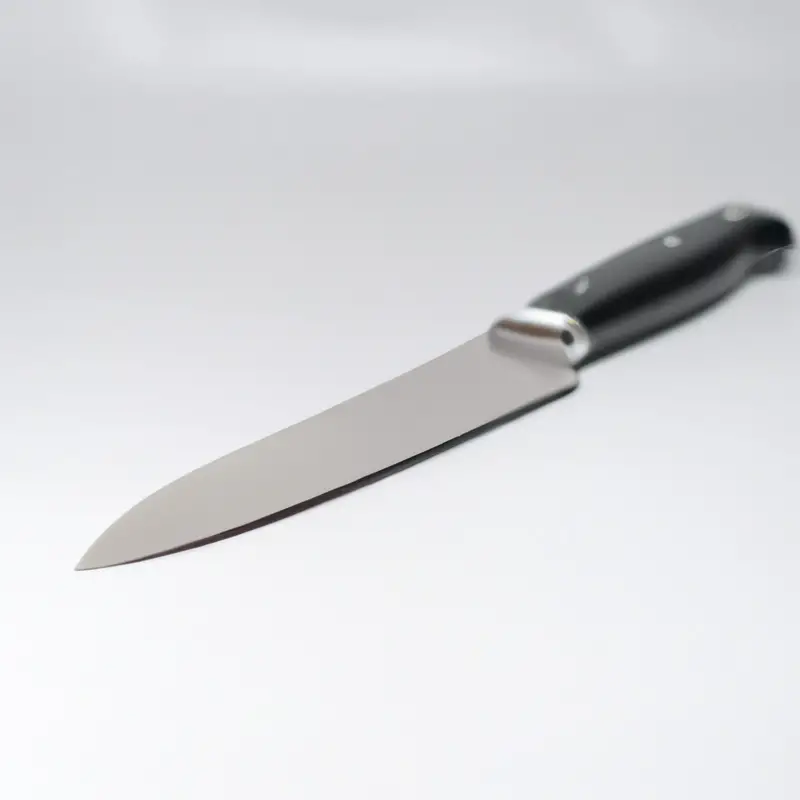
Weighing the benefits and drawbacks of heavy vs. light knives
When it comes to choosing between heavy and light knives, it ultimately depends on personal preference and the task at hand. Heavy knives are great for chopping and cutting tough ingredients while light knives are ideal for precision work and delicate ingredients.
Benefits of Heavy Knives:
- Easy to handle for tough ingredients
- The weight of the knife does much of the work for you
- Typically have a longer lifespan due to the durability of the blade
Drawbacks of Heavy Knives:
- Can cause fatigue and strain during extended use
- More difficult to control for precision work
Benefits of Light Knives:
- Easy to control for precision work
- Perfect for slicing delicate ingredients
- Less strain and fatigue during extended use
Drawbacks of Light Knives:
- May not be strong enough to handle tough ingredients
- May require more effort to complete certain tasks
Consider the type of cooking you do and the tasks you perform most frequently before choosing between a heavy or light knife. It’s also important to find a knife that feels comfortable in your hand and allows for proper technique to prevent accidents.
Properly sharpening and maintaining your knife for optimal use
A sharp knife is essential for safe and efficient kitchen work. Dull knives require more force to cut, making them more likely to slip and cause injury.
Properly sharpening and maintaining your knife can extend its lifespan and optimize its performance.
To sharpen your knife, you can use a sharpening stone or an electric sharpener. Hold the blade at an angle of 15-20 degrees and swipe it across the stone or sharpener, alternating sides until the blade is sharp.
Remember to hone the blade regularly with a honing steel to maintain the sharp edge.
To keep your knife in good condition, avoid using it on hard surfaces like glass or metal and don’t put it in the dishwasher. Wash the blade by hand with mild soap and a soft sponge, then dry it immediately to prevent rusting.
Store the knife in a designated spot, such as a knife block or a magnetic strip, to prevent it from getting damaged or lost.
Proper knife maintenance is important for both safety and performance. By sharpening and caring for your knife, you can ensure that it will serve you well for years to come.
Considering the use of a knife block with a non-slip base
A knife block with a non-slip base is an excellent option to prevent your chef knife from rolling off the countertop. These blocks are designed with a stable base to keep the block in place while you access or store your knife.
A non-slip base prevents it from sliding around even with some force applied.
Additionally, knife blocks keep your knives organized and easily accessible, so you do not have to search through a drawer or container to find the desired knife. However, it is essential to choose a knife block with the right sized slots for your knives to fit securely and protect the blade’s edges.
Consider the amount of counter space you have and the number of knives you need to store when purchasing a knife block.
Finally, it is vital to clean your knife block regularly to avoid the buildup of bacteria or dirt that can affect the quality and safety of your knives.
Final Verdict
Ensuring your kitchen’s safety is crucial and it starts with mastering the right techniques for handling your chef knife. By using a grip pad, a magnetic strip, a designated knife block, or a knife sheath, you can significantly reduce the risk of accidents at home.
Furthermore, employing proper storage and handling techniques, such as using a knife with a bolster or finger guard and knowing how to sharpen and maintain it, can go a long way in preventing your knife from rolling off the countertop.
When it comes to selecting a knife block, consider one with a non-slip base to provide maximum stability. Your kitchen’s safety is in your hands, and by implementing these practices, you can create a safer and more comfortable cooking environment.
Remember, don’t compromise on safety and always prioritize prevention.
Stay safe, stay cautious, and cook with confidence.

